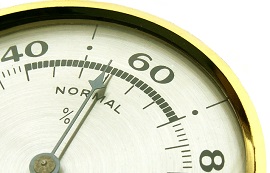A humidifier can be essential in dry or cold climates. It can help in making your home to feel warmer and more comfortable in cold weather and improve hydration at times when the air is dry. Like any appliance, it is important that your humidifier is kept clean to ensure that it continues to work properly. If your humidifier is dirty, it not only compromises efficiency, but it could pose a danger to your health. A dirty humidifier provides the ideal conditions for mold and bacteria to flourish, which would allow contaminants to be released into the air. Fortunately, keeping your humidifier clean need not be stressful.
Basic Maintenance: 
It is a good idea to establish a routine of cleaning and maintaining your humidifier. If this task is regularly completed, it need not be a tough chore. There are a number of tasks involved in proper maintenance, but these can be broken down into daily and weekly items to make the task simpler.
Your humidifier tank should be emptied, completely dried and refilled using clean water each day. This will remove the opportunity for bacteria to collect and start to grow. This daily task will also prevent contaminants from accumulating in the tank and being released into your air.
Your water quality can also affect keeping your humidifier clean. If your water supply contains high levels of minerals, there is a risk of mineral deposits accumulating inside the tank. This risk can be minimized by using filtered or distilled water. If you have a hard water supply, you need to take care to clean your humidifier on a regular basis to avoid scale developing and compromising performance.
Deep Cleaning:
Periodically, your dehumidifier will require a deep cleaning. Fortunately, basic white vinegar can provide a valuable tool for this task. The vinegar should be used on any area of the unit that has contact with water. The tank can also be cleared of any mineral deposits by soaking with vinegar. Allow the vinegar to sit for approximately twenty minutes, which will soften any scale and allow it to be rinsed away. For stubborn scale, you can use a bottle brush to gently clear it. Don’t be tempted to use sharp or hard tools to scrape away any scale as it could cause damage. Once you have cleaned the unit, rinse thoroughly using tap water and completely dry to remove any traces of vinegar. Don’t be alarmed if a vinegar odor lingers, as it will dissipate very quickly after rinsing.
If your tank is dirty, particularly if it has not been used for a while and has been in storage, vinegar may not be sufficient. You may need to use a chemical cleaning product. Many of these products contain bleach and chlorine, so you will only need a small amount. You will also need to take more care in rinsing the tank several times to remove any residue before it is used. Be sure to follow the product instructions carefully to ensure that the tank is cleaned without any damage.
